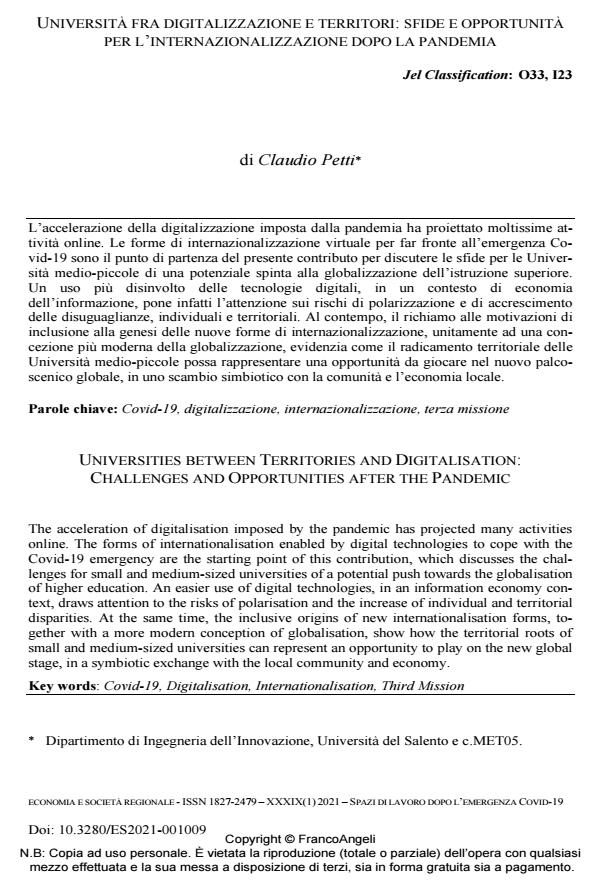Universities between territories and digitalisation: Challenges and opportunities after the pandemic
Journal title ECONOMIA E SOCIETÀ REGIONALE
Author/s Claudio Petti
Publishing Year 2021 Issue 2021/1
Language Italian Pages 10 P. 107-116 File size 244 KB
DOI 10.3280/ES2021-001009
DOI is like a bar code for intellectual property: to have more infomation
click here
Below, you can see the article first page
If you want to buy this article in PDF format, you can do it, following the instructions to buy download credits

FrancoAngeli is member of Publishers International Linking Association, Inc (PILA), a not-for-profit association which run the CrossRef service enabling links to and from online scholarly content.
The acceleration of digitalisation imposed by the pandemic has projected many activities online. The forms of internationalisation enabled by digital technologies to cope with the Covid-19 emergency are the starting point of this contribution, which discusses the challenges for small and medium-sized universities of a potential push towards the globalisation of higher education. An easier use of digital technologies, in an information economy context, draws attention to the risks of polarisation and the increase of individual and territorial disparities. At the same time, the inclusive origins of new internationalisation forms, together with a more modern conception of globalisation, show how the territorial roots of small and medium-sized universities can represent an opportunity to play on the new global stage, in a symbiotic exchange with the local community and economy.
Keywords: Covid-19, Digitalisation, Internationalisation, Third Mission
Jel codes: O33, I23
- Digital Innovation Management Claudio Petti, Antonella Longo, Antonio Ficarella, pp.185 (ISBN:978-3-031-80425-0)
Claudio Petti, Università fra digitalizzazione e territori: sfide e opportunità per l’internazionalizzazione dopo la pandemia in "ECONOMIA E SOCIETÀ REGIONALE " 1/2021, pp 107-116, DOI: 10.3280/ES2021-001009